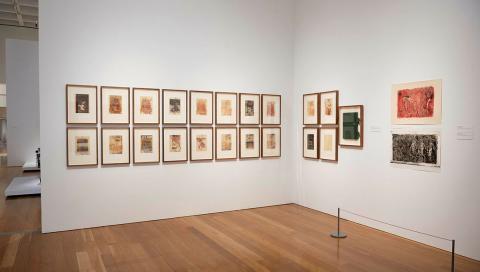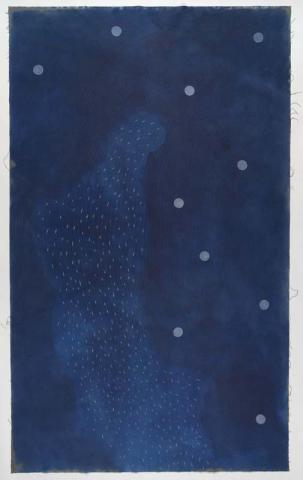Judy Watson: identity
By Katina Davidson
mudunama kundana wandaraba jarribirri March 2024
The Waanyi, from the Gulf of Carpentaria, are known as ‘running-water people’. In Waanyi language, an aspect of the precious resource of water is termed ‘dumularra’ – meaning ‘current of water’ or ‘flowing water’. For Judy Watson, this can be interpreted as a current carrying important, if painful, family memories.
Identity is an essential aspect of Watson’s work. Her viewpoint and positioning as an Aboriginal woman is key, as is her research exploring her family’s history. Archival documents created by the Department of Native Affairs as well as letters from the Chief Protector of Aborigines about Watson’s great-grandmother Mabel Daley and grandmother Grace Isaacson are reproduced in the artist book under the act 2007. However, one story omitted from the official records concerns Watson’s ancestor Rosie. In the artist’s words:
My great-great-grandmother Rosie and this other young girl hid behind a windbreak when there was a massacre of Aboriginal people by troopers at Lawn Hill Station. Rosie was stabbed in the upper body by a bayonet and carried the scar for the rest of her life. The girls escaped to the water, holding their bodies down with stones on their bellies and breathing through reeds to evade the perpetrators.
In homage to the matriarchy, Watson has painted large-scale profiles of family members, such as her daughter Rani Carmichael and sister Lisa Watson. passing from the edge of memory to the night sky 2007 was painted shortly after Watson’s grandmother Grace Isaacson passed away, and embodies her spirit. Here these women’s essence is presented with a respect not afforded their ancestors.
Connected objects

under the act 2007
- WATSON, Judy - Creator
